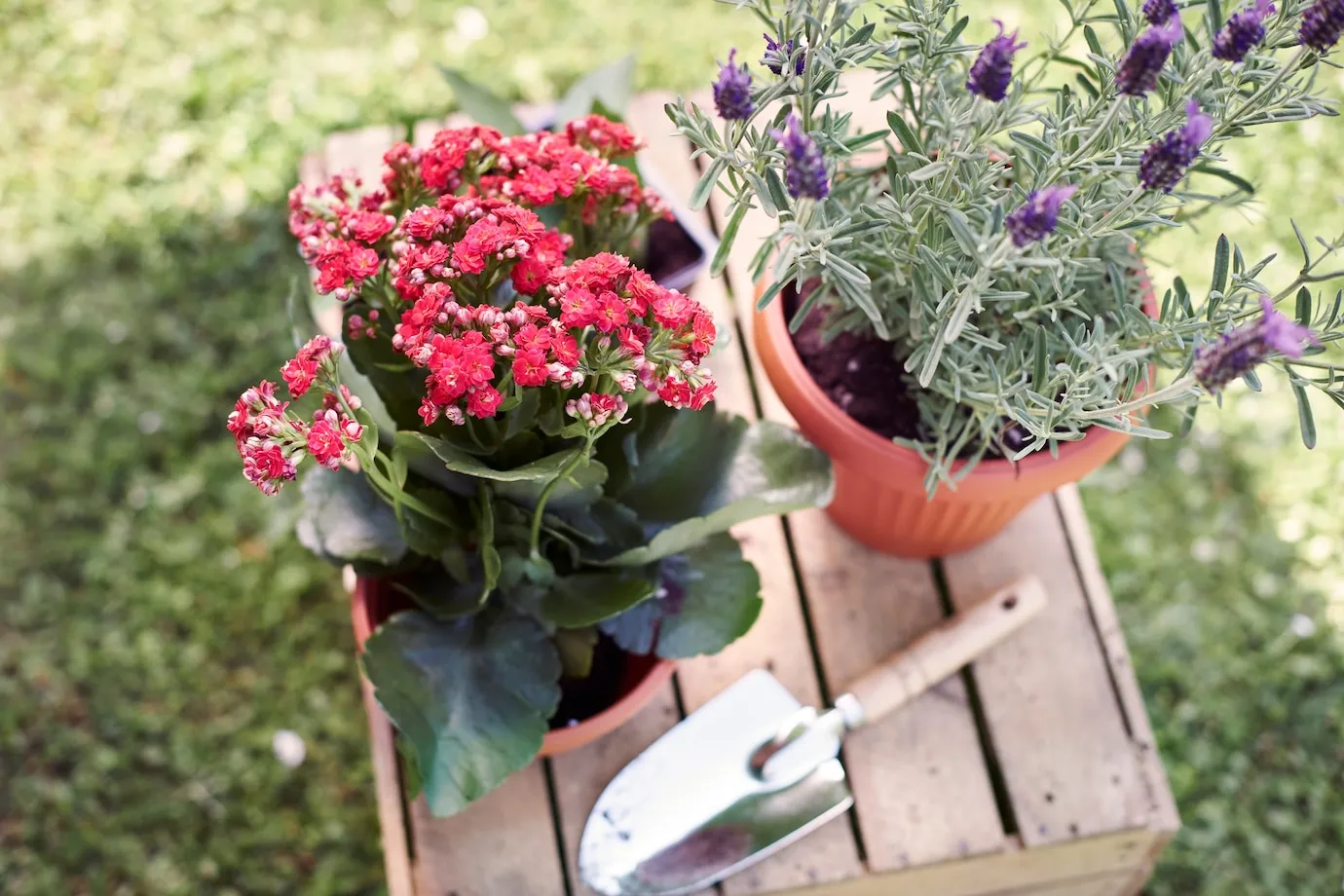Creating a garden that offers vibrant color year-round can be a rewarding and aesthetically pleasing challenge. Seasonal flower planting is a fantastic way to ensure that your garden has something beautiful in bloom, no matter the time of year. By selecting a variety of flowers that bloom in different seasons, you can design a garden that provides a continuous display of color. In this post, we’ll explore some seasonal flower planting ideas that will add year-round color and interest to your garden.
Native plant landscaping is an excellent choice for homeowners in Ontario who want to create a sustainable, low-maintenance garden that supports local wildlife and the environment. Native plants are naturally adapted to the region’s climate, soil, and weather conditions, making them more resilient and easier to care for compared to non-native species. By incorporating native plants into your landscape, you can enjoy a garden that thrives with minimal intervention.
For residents seeking professional assistance with their landscaping needs, Landscaping in Richmond Hill offers expert services tailored to enhance the beauty and functionality of outdoor spaces.
Spring: Awakening with Bright Blooms
Spring is the season of renewal, and it’s the perfect time to plant flowers that will add color and vibrancy to your garden after a long winter. To create a colorful spring garden in Ontario, consider planting the following:
- Tulips (Tulipa spp.)
- Tulips are one of the most popular spring flowers, known for their wide variety of colors, from red and yellow to pink and white. They thrive in well-drained soil and full sun.
- Plant them in groups or clusters for a dramatic spring display.
- Daffodils (Narcissus spp.)
- These cheerful, yellow flowers are an early sign of spring and add a bright pop of color. Daffodils are relatively low-maintenance and grow well in both sun and partial shade.
- Pair them with spring perennials like hostas for a well-rounded garden.
- Crocus (Crocus spp.)
- Crocus flowers are among the first to bloom in spring, with delicate purple, yellow, and white blossoms. They grow well in full sun or light shade and are perfect for planting along garden borders.
- Primrose (Primula spp.)
- Primroses bring vibrant colors like yellow, pink, and purple to your garden, even in early spring. They do well in both sunny and partially shaded areas and are perfect for containers or garden beds.
For a professional touch, consider consulting garden design & planting services to create a spring flower arrangement that brings out the best of your garden space.
Summer: Vibrant Colors to Enjoy
Summer is the peak of the growing season, and it’s when you can create bold and vibrant flower displays. During the warmer months, flowers like the following thrive:
- Sunflowers (Helianthus annuus)
- Sunflowers add an iconic touch to your garden with their large, cheerful yellow blooms. They thrive in full sun and grow tall, creating a striking focal point.
- Plant them in the back of flower beds or as standalone specimens.
- Lavender (Lavandula spp.)
- Lavender brings a pop of purple to your garden while also providing a lovely fragrance. It attracts pollinators like bees and butterflies and does well in full sun with well-draining soil.
- Use lavender as a border plant or incorporate it into your herb garden.
- Coneflower (Echinacea purpurea)
- Coneflowers are hardy perennials that provide long-lasting color, with their pink, purple, and white blooms. They are drought-tolerant and thrive in full sun to partial shade.
- These flowers are perfect for adding texture and color to your garden while attracting pollinators.
- Zinnia (Zinnia elegans)
- Zinnias come in a wide range of colors, from red to orange to pink, and they thrive in hot weather. They grow quickly and provide a burst of color all summer long.
- Plant them in the front of your flower beds or in containers for easy maintenance.
- Daylilies (Hemerocallis spp.)
- Daylilies are hardy, low-maintenance flowers that bloom in a variety of colors. They can grow in full sun to partial shade and tolerate a variety of soil types.
- Plant them in groups for a vibrant summer display.
For summer flower planting that complements your landscape, you may want to consider landscaping consultation services to ensure that the colors and heights of your plants are balanced and visually appealing.
Fall: Warm Hues for the Changing Season
Fall is a wonderful time to plant flowers that bring rich, warm tones to your garden, offering a beautiful transition between the vibrancy of summer and the quiet of winter. Some excellent flowers for fall planting include:
- Chrysanthemums (Chrysanthemum spp.)
- Mums are a staple of fall gardens, blooming in shades of yellow, red, orange, and purple. They thrive in full sun and provide a lasting display well into the fall.
- They can be used in garden beds or containers and are great for adding color as the temperature drops.
- Asters (Aster spp.)
- Asters bloom in late summer to fall, with vibrant purple, pink, and white flowers. These plants attract pollinators and are perfect for adding a splash of color in the cooler months.
- Asters work well in flower beds or as part of a wildflower garden.
- Sedum (Sedum spp.)
- Sedums, also known as “autumn joy,” have thick, succulent-like leaves and bloom in late summer to fall with clusters of pink or red flowers. These plants are drought-tolerant and low-maintenance, making them a great choice for a fall garden.
- Japanese Anemone (Anemone hupehensis)
- Japanese Anemones bloom in late summer to fall with soft pink, white, or purple flowers. They are perfect for adding height to your flower beds and provide a delicate, airy look.
Winter: Evergreens and Hardy Flowers for Interest
While winter brings a lull to flowering plants, there are still ways to add interest and beauty to your garden with hardy evergreens and winter-blooming flowers. Some options include:
- Evergreens
- Evergreens like holly and boxwood provide year-round greenery to your garden, offering structure and color even in the cold months.
- Consider planting them along walkways or as hedges to maintain visual interest throughout the winter.
- Winter Jasmine (Jasminum nudiflorum)
- Winter jasmine is a hardy shrub that produces bright yellow flowers in late winter or early spring. It thrives in full sun to partial shade and can be grown as a climbing plant or ground cover.
- Winter-Flowering Camellias (Camellia spp.)
- Some camellia species bloom in winter, adding bright colors to your garden when most other plants are dormant. They prefer partial shade and can be planted in sheltered spots for added protection from winter winds.
- Snowdrops (Galanthus nivalis)
- Snowdrops are one of the first flowers to bloom in late winter, often appearing through the snow. Their delicate white flowers symbolize the arrival of spring, even in the coldest months.
Conclusion
By carefully selecting flowers that bloom in different seasons, you can create a garden that provides year-round color and beauty. From the bright blooms of spring to the warm tones of fall, each season brings its own unique palette of flowers that can enhance your outdoor space. Sustainable planting choices like native species, drought-tolerant plants, and pollinator-friendly options will not only beautify your yard but also support the local ecosystem. For a custom flower planting plan tailored to your space, you can consult landscaping services to ensure a beautiful, balanced, and thriving garden throughout the year.





